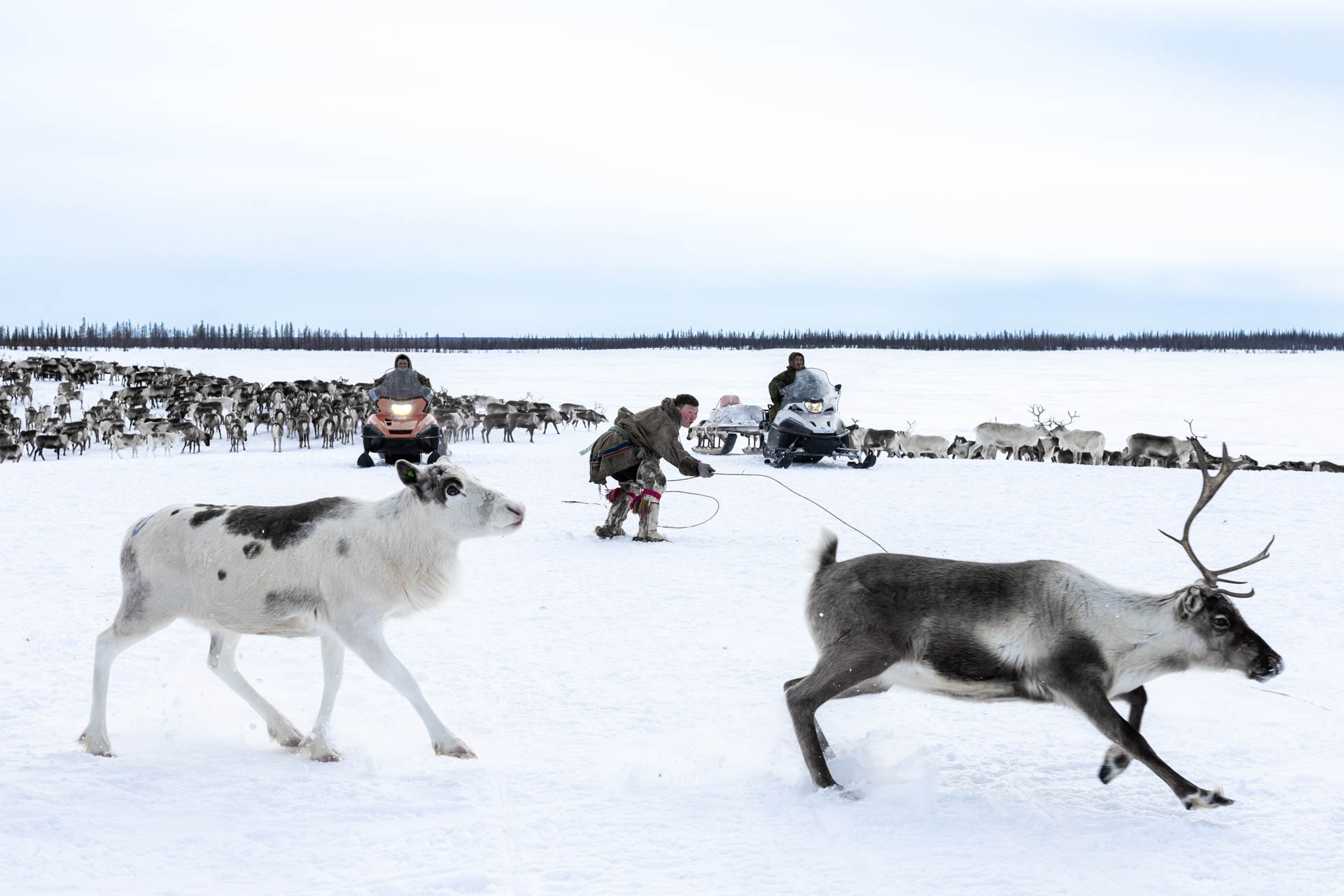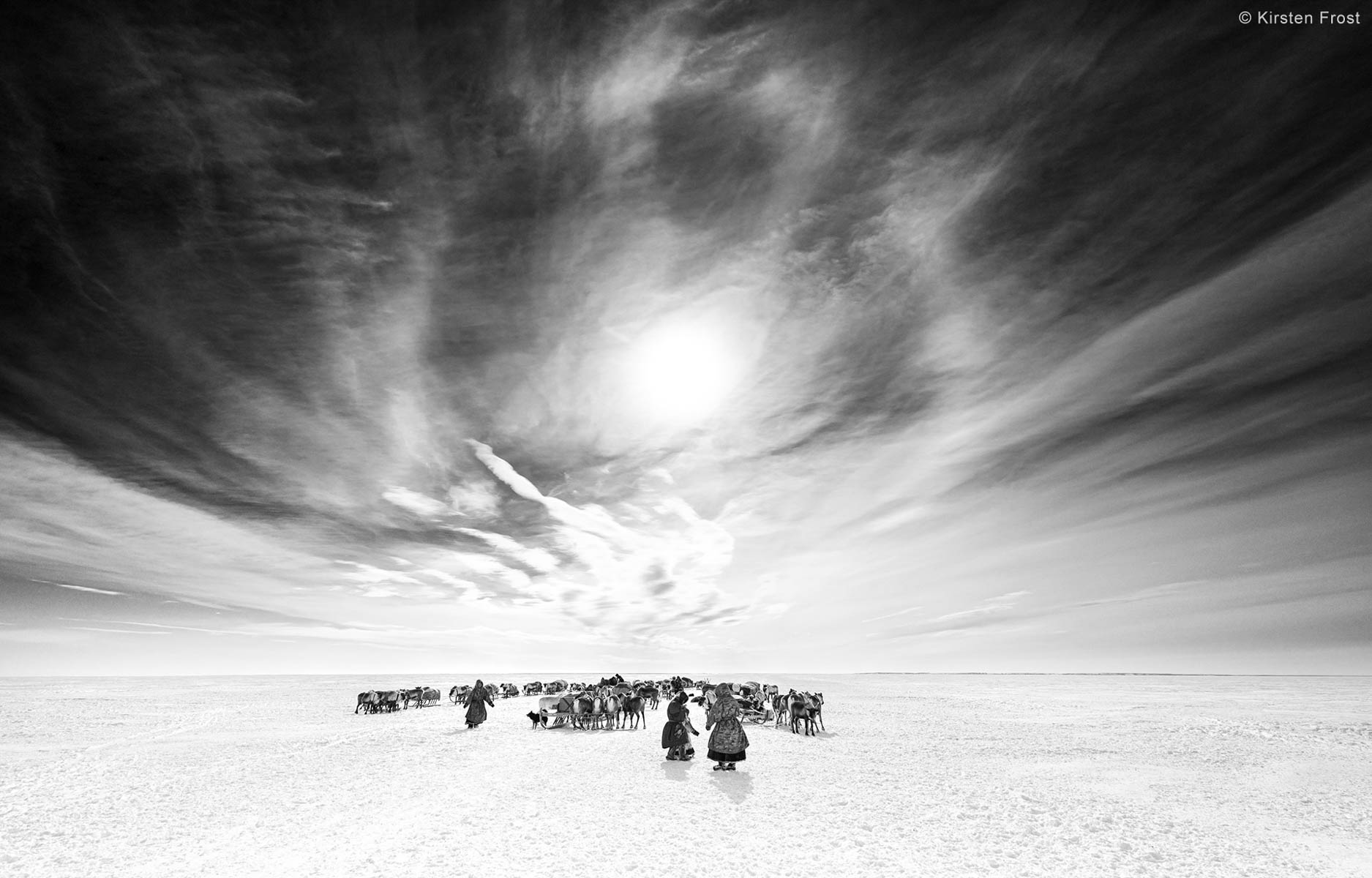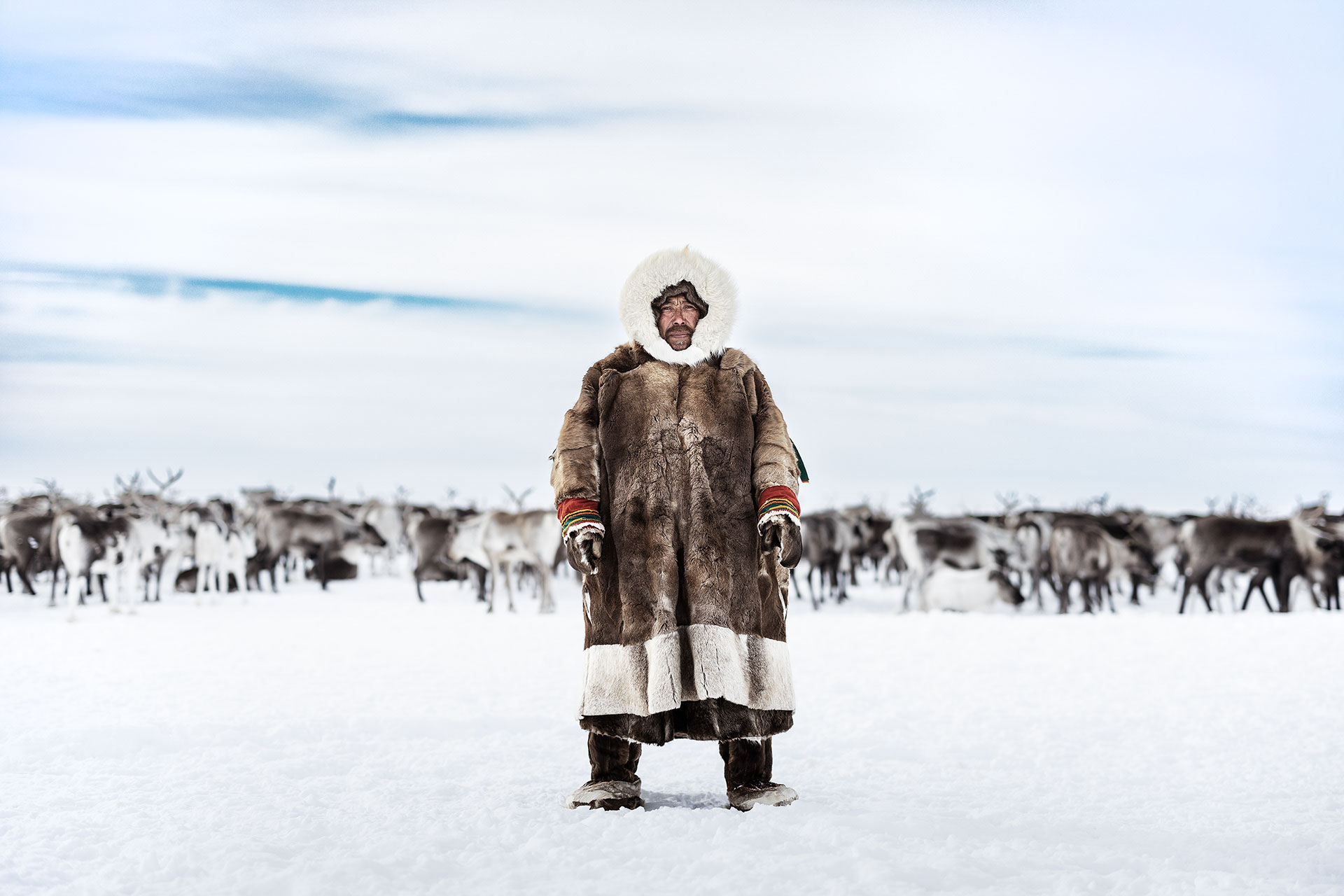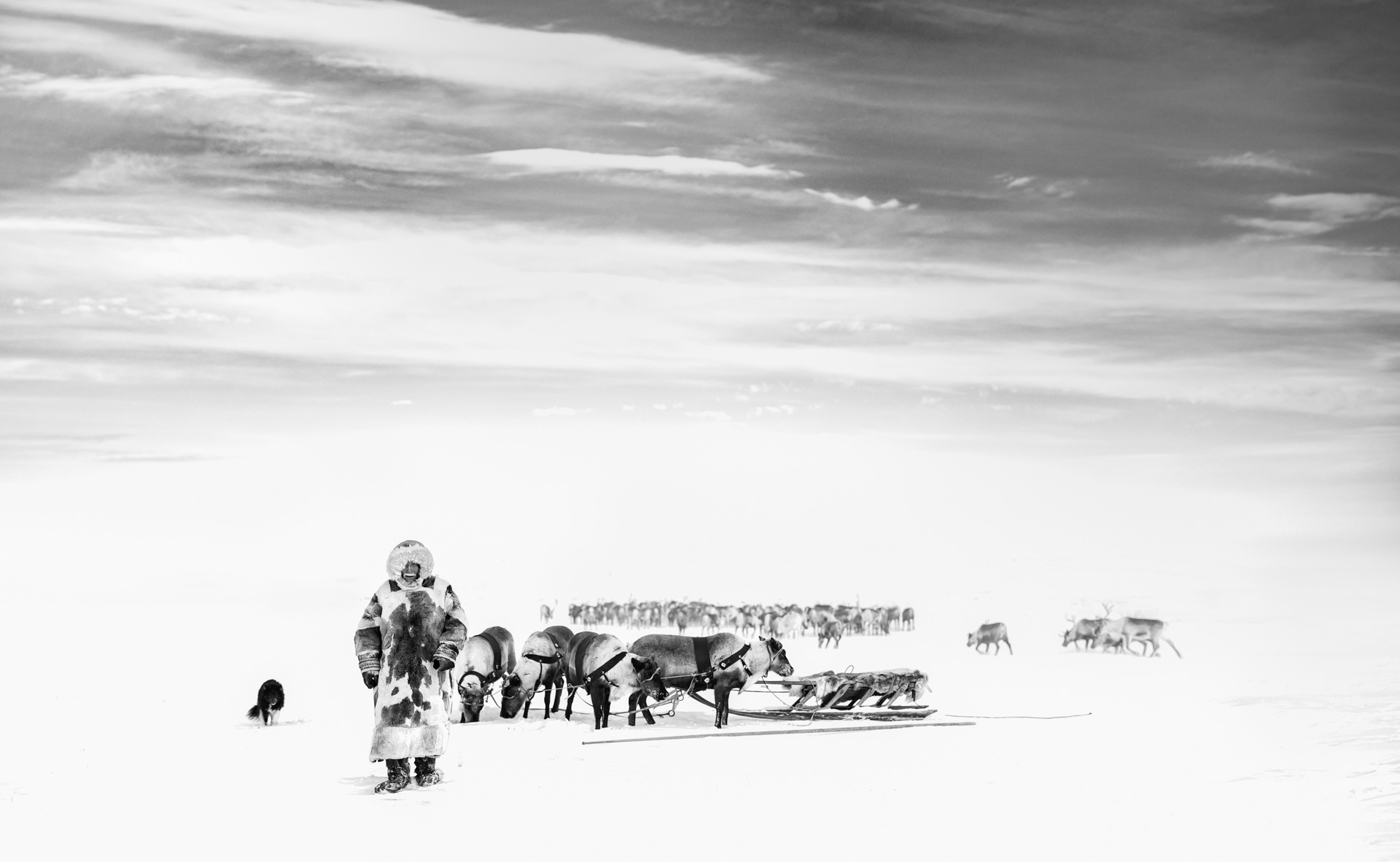There are few places on Earth that evoke a sense of remoteness quite like Yamal. In the language of the nomadic Nenets people, Yamal means “the end of the world.” And indeed, it felt like I had reached it.
My adventure started in Moscow, where I gathered my winter gear—waterproof pants, insulated boots, and layers of clothing designed for the brutal Arctic cold. Excitement filled the air as we laughed, trying on our bulky gear inside a van, knowing that an incredible adventure lay ahead.
We drove for hours, watching the last hints of daylight fade into the endless expanse of ice and snow. Stopping for coffee and a bite to eat along the way, I noticed how friendly and welcoming people were, despite the harsh environment. But the moment that made me realize this was a true adventure was when we finally left the road behind. It was after dark when we transferred our gear onto snowmobiles and ventured deep into the tundra. The only light came from our headlights, illuminating the vast emptiness ahead. It was cold, silent, and utterly exhilarating.





The first thing that struck me upon arrival were the chums—the traditional reindeer-hide tents of the Nenets people. They were much larger than I had imagined, sturdy yet portable structures that would be dismantled and rebuilt every single day during migration. The sheer effort required to move an entire settlement daily was staggering.
Stepping inside, I was greeted by warmth—both from the fire burning at the center and the closeness of family life within the chum. Everyone, including the dogs, huddled together for warmth. Sleeping around the fire with our feet facing it was a communal experience unlike any other. The fire wasn’t just for heat; it was used to cook meals, melt snow for water, and dry out our boots, which would sometimes freeze solid.
A humorous challenge came when my contact lens solution froze, making it tricky to manage my lenses in the morning (I’ve since had laser eye surgery, so thankfully no more need for contact lenses!). Another night, I woke to find my water bottle had frozen beside me, forcing me to tuck it against my body to melt enough ice for a drink. These small moments were constant reminders of the Arctic’s unforgiving nature.












When arriving at our new location to setup camp each day, the reindeers were released to forage, disappearing into the vast tundra. The next morning, the Nenets would set out to recapture them—a timely process that involved incredible skill and precision. Identifying specific reindeer among the hundreds, they lassoed and tied select individuals to the sledges, preparing them for the day’s migration. Watching them work, I was reminded of cowboys herding cattle, and I even thought of calling one of my photos Cowboys of Siberia.
The men were expert lassoers, making quick, deliberate movements with their ropes. The dogs were also hard at work moving the reindeer during this process. Even the children practiced lassoing as a game, preparing for their future roles in herding. Despite their small, penguin-like waddling from the many layers of clothing, they were strong and independent. Their connection to this way of life was undeniable.
The women, too, were incredibly strong, often leading the dismantling and rebuilding of the chums. Every task had a purpose, and there was no room for unnecessary effort. The work was hard, but it wasn’t done for show—it was essential for survival.


One of the most visually striking moments of the journey was crossing the frozen Gulf of Ob. This was where the full scale of the migration became clear. Vasili, an elder and leader of the group, led the way, guiding hundreds of reindeer, sledges, and families across the icy expanse. Watching him work was like witnessing a reindeer whisperer—his every movement understood by the animals. The dramatic clouds overhead and the unbroken white landscape made for some of the most powerful photographs I have ever taken.
From the back of a snowmobile, we photographed the migration from multiple angles—getting ahead to capture them approaching, then moving perpendicular for a side perspective. Each time, the sheer magnitude of the migration struck me anew. It was a humbling reminder of how small we are in such an immense landscape.




Spending time with the Nenets reinforced a theme I’ve encountered in my travels—people in remote, nomadic cultures possess an undeniable strength and connection to the natural world. The Nenets are a perfect example of balancing tradition with adaptation. Many of them own homes in town, allowing their children to attend school while still participating in the migration during holidays. This dual existence provides them with financial independence while preserving their cultural heritage.
The elders, like Vasili, hold immense wisdom, passed down through generations. Watching them lead, teach, and guide their communities is inspiring, yet it also raises questions about the future. As the world changes, how long can this way of life persist? The Nenets are doing an admirable job of maintaining their identity while embracing some aspects of modernity, but the balance is delicate.


Being in such an isolated, vast environment made me feel like a mere speck in the universe—a cliché, perhaps, but a deeply real sensation when you stand in the middle of the tundra with nothing but ice and sky around you. It was a place where vulnerability and survival were ever-present, yet that very vulnerability made me feel more alive than ever.
The Nenets’ way of life is a lesson in resilience, adaptation, and identity. Their traditions are not just preserved for the sake of the past; they are lived every day with purpose. It was an honor to witness and document their world, and it left me with a renewed appreciation for the power of human endurance and connection.
Would I return? Absolutely. Because in these places of raw beauty and extreme conditions, you don’t just find stories—you find yourself.
Stay ahead of the adventure. Be the first to know about our newest destinations—sign up now!

